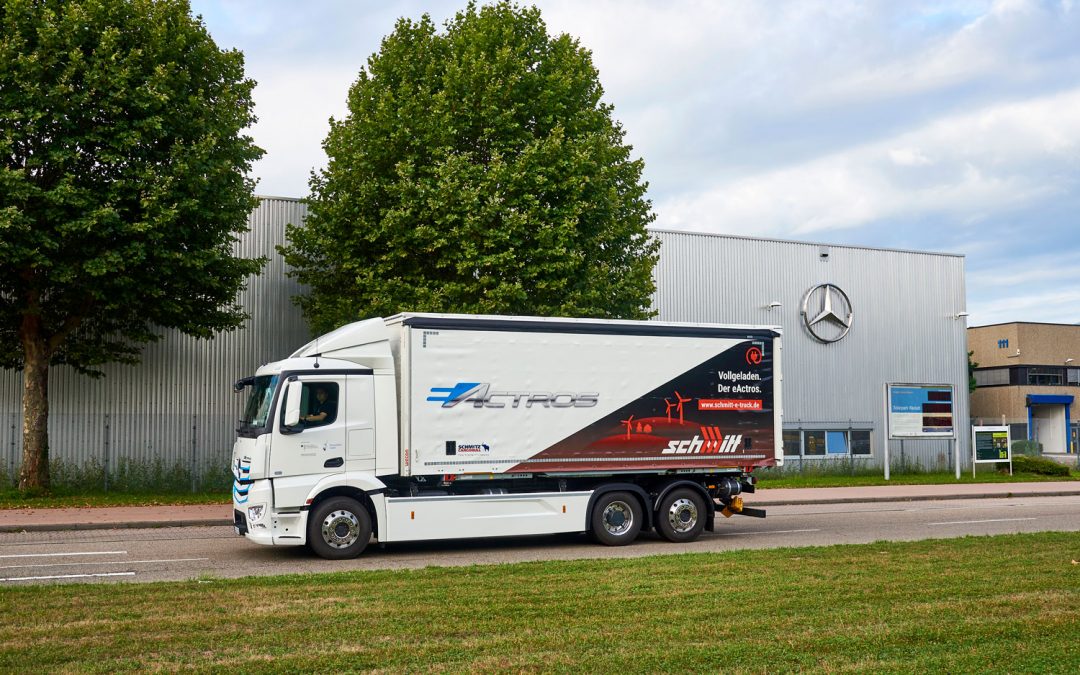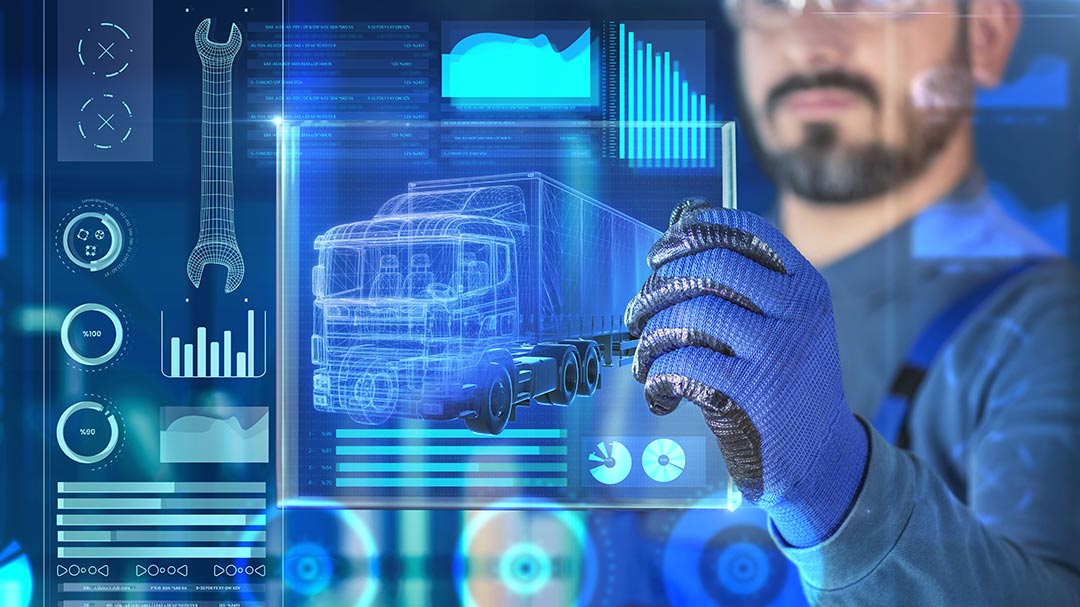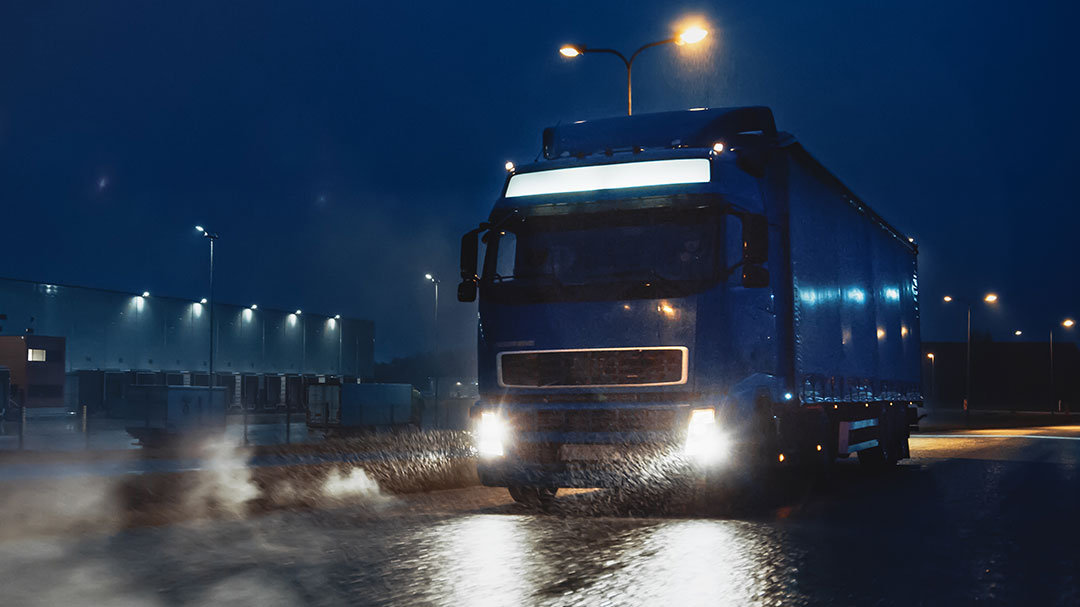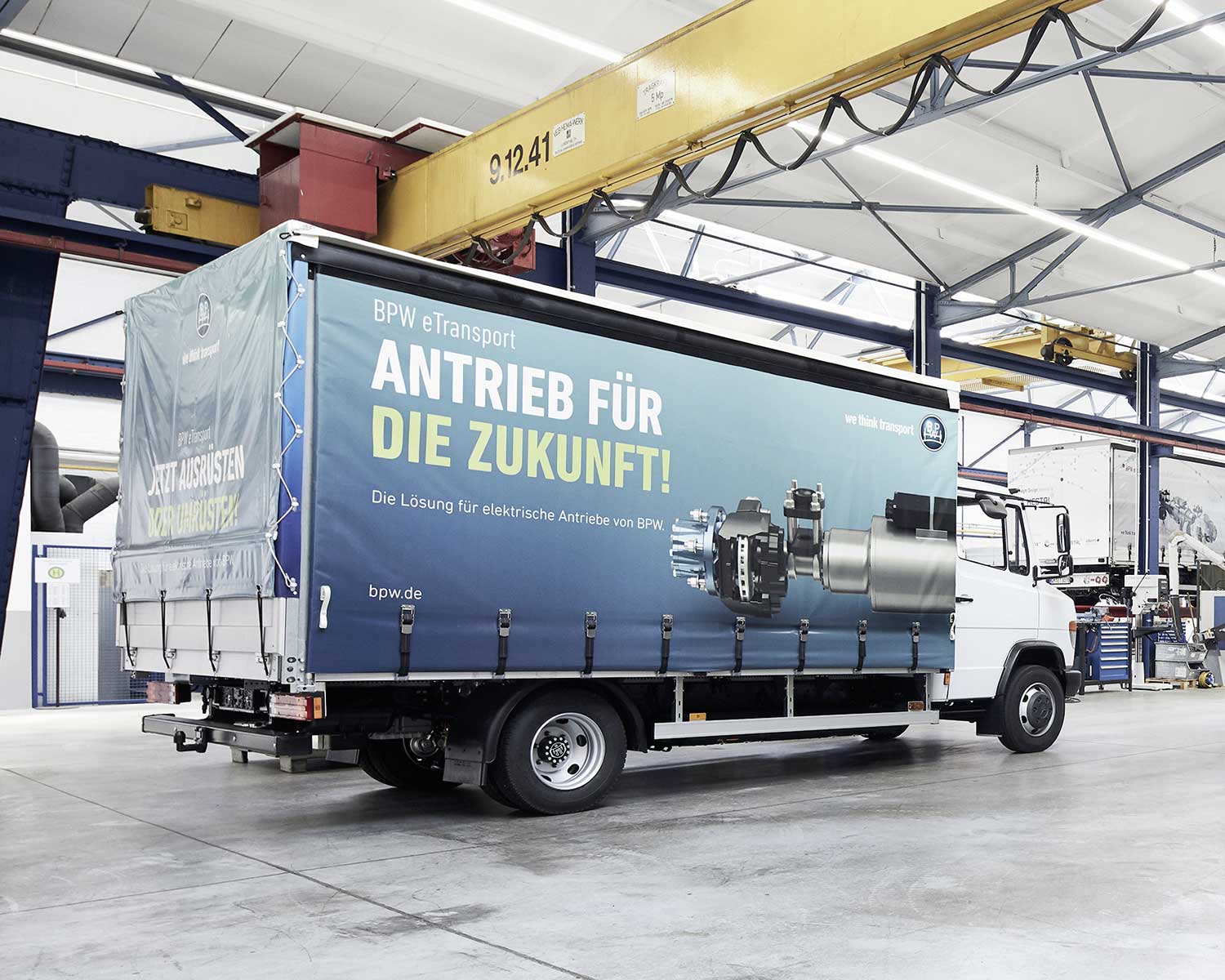Text: Juliane Gringer
Photos: Daimler AG
For a long time, it was impossible to imagine heavy goods vehicles and alternative drives going hand in hand. With the eActros, the first Daimler 25-tonner with an electric engine, Mercedes-Benz Trucks has made this combination possible: robust, reliable and with a range of around 200 kilometres – when it comes to customer use, does this electric truck live up to the hype? Baden-Württemberg company Logistik Schmitt is putting the vehicle through its paces.
The 25-tonner rolls through the entrance to the Mercedes-Benz plant in Gaggenau, Baden-Württemberg, virtually unnoticed – and not just because an Actros isn’t a rare sight around here, but most of all, because it’s incredibly quiet. As soon as the Logistik Schmitt driver parks at the loading ramp and skips his tarpaulin to plug a charging cable into his vehicle, it becomes clear: this truck runs on electricity! It’s an eActros: Mercedes-Benz Trucks presented this electric heavy goods vehicle at the 2016 IAA as the world’s first manufacturer to do so. Bietigheim bei Rastatt-based company Logistik Schmitt got the chance to test it: in the initial phase, the company used the vehicle in three-shift operation around the clock between a warehouse in Ötigheim and part of the Mercedes-Benz plant in Gaggenau. ‘We’re involved in assembly line supply for a vehicle manufacturer here,’ explains Rainer Schmitt, managing director of Logistik Schmitt, who is running the family business in its third generation. ‘The deliveries need to be fulfilled completely to schedule.’
eActros planned for production in 2021
Europe should be carbon-neutral by 2050 – that’s the aim of the European Commission. It’s planning legislation to that effect, but electric drive suppliers and vehicle manufacturers are ambitious. ‘We’re taking this target very seriously,’ explains Christian Lazik, Mercedes-Benz eActros Product Manager at Daimler Trucks. ‘If we count backwards from this deadline and presume it takes a good ten years to replace all the vehicles in the fleet, it’s clear: if we want to become completely CO2-neutral in the haulage industry, we have to offer the right vehicles. And that’s what we’re going to do. We’re pursuing a sustainable business strategy and our target is to exclusively supply new vehicles which are CO2-neutral ‘tank-to-wheel’ in the triad markets of Europe, Japan and North America by 2039. The development of the eActros and the fleet test were supported by the German government: as part of the ‘Concept ELV2’ project, the Federal Ministry of Economic Affairs and Energy (BMWi) and the former Federal Ministry for the Environment, Nature Conservation and Nuclear Safety (BMUB) backed the integration of an innovative electric drive in heavy goods vehicles in distribution transport and the practical testing thereof.

»From 2039, we will exclusively supply CO2-neutral vehicles in the triad markets of Europe, Japan and North America.«
Christian Lazik, Mercedes-Benz eActros Product Manager at Daimler Trucks
Daimler started this practical test, known as ‘innovation fleet’, in 2018. Around 20 customers across various industries are taking part: partners such as Dachser, Edeka and Hermes transport goods ranging from groceries and general deliveries to construction and factory materials. This means a variety of different truck bodies are involved, from dry and cold storage to silo and tarpaulin vehicles. One area Logistik Schmitt specialises in is contract logistics for vehicle manufacturers – the company handles 2.3 million carriers each year. ‘Two thirds of the 72 trucks in our fleet are used in shuttle transport and handle around 300 deliveries in a radius of 25 to 30 kilometres – so using an electric vehicle is a very practical, sensible choice,’ says Rainer Schmitt.
Charging required only once per shift
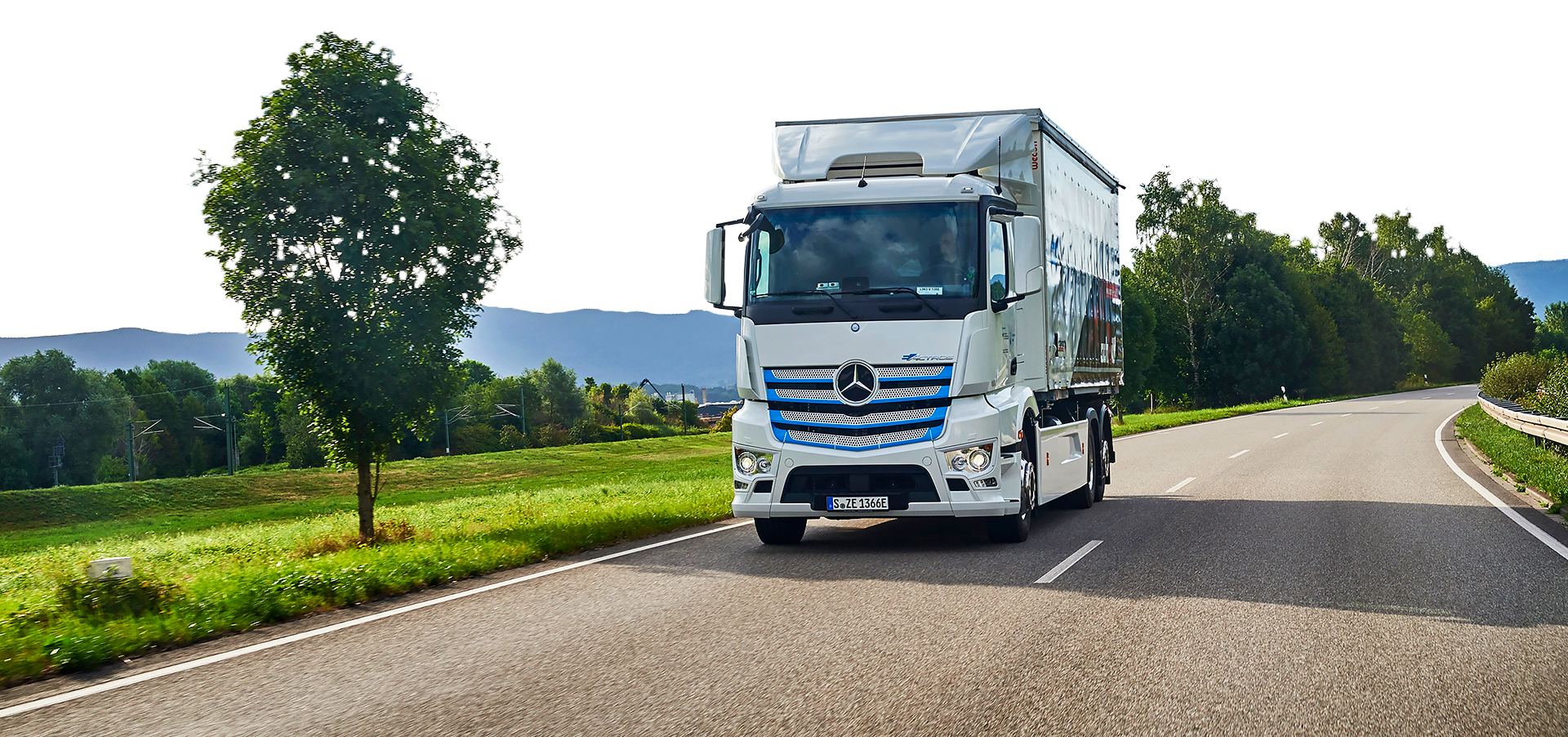
Batteries secured in a crash cage
A 240-kilowatt-hour battery was built to achieve this – consisting of eleven modules, including three inside the frame and eight below the vehicle. ‘The latter are stored and protected in a crash cage in case of an accident,’ says Lazik. The battery charges fully in less than two hours using a standard charging cable at maximum charging performance. ‘We’ve given test customers two chargers to choose from. The eActros also recuperates while driving. The driving style has a major impact: the more forward-thinking you are when you drive and the less you need to use the brakes, the more brake energy is fed back into the system, increasing the amount of range available. That means driver training is an important factor for success.’ To ensure the vehicles’ longevity, the temperature needs to be regulated: ‘We have equipped the batteries with a full thermomanagement system, so that temperatures in the battery system are ideal all year round.’ The eActros is powered by an electric rear axle with an output of 252 kilowatts. ‘Of course, all consumers of energy in the vehicle run on electricity, whether that’s the power steering pump, the compressor for the air conditioning in the driver cab or the pressurised air compressor for the brake system,’ adds Lazik.
Less stress for drivers
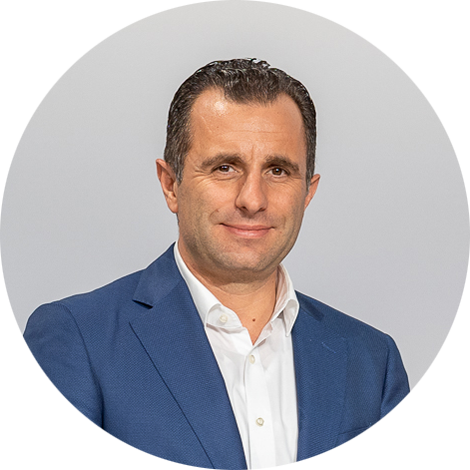
»If you don’t try out new technologies, you won’t find out whether they’ll work in practice.«
Rainer Schmitt, managing director of Logistik Schmitt
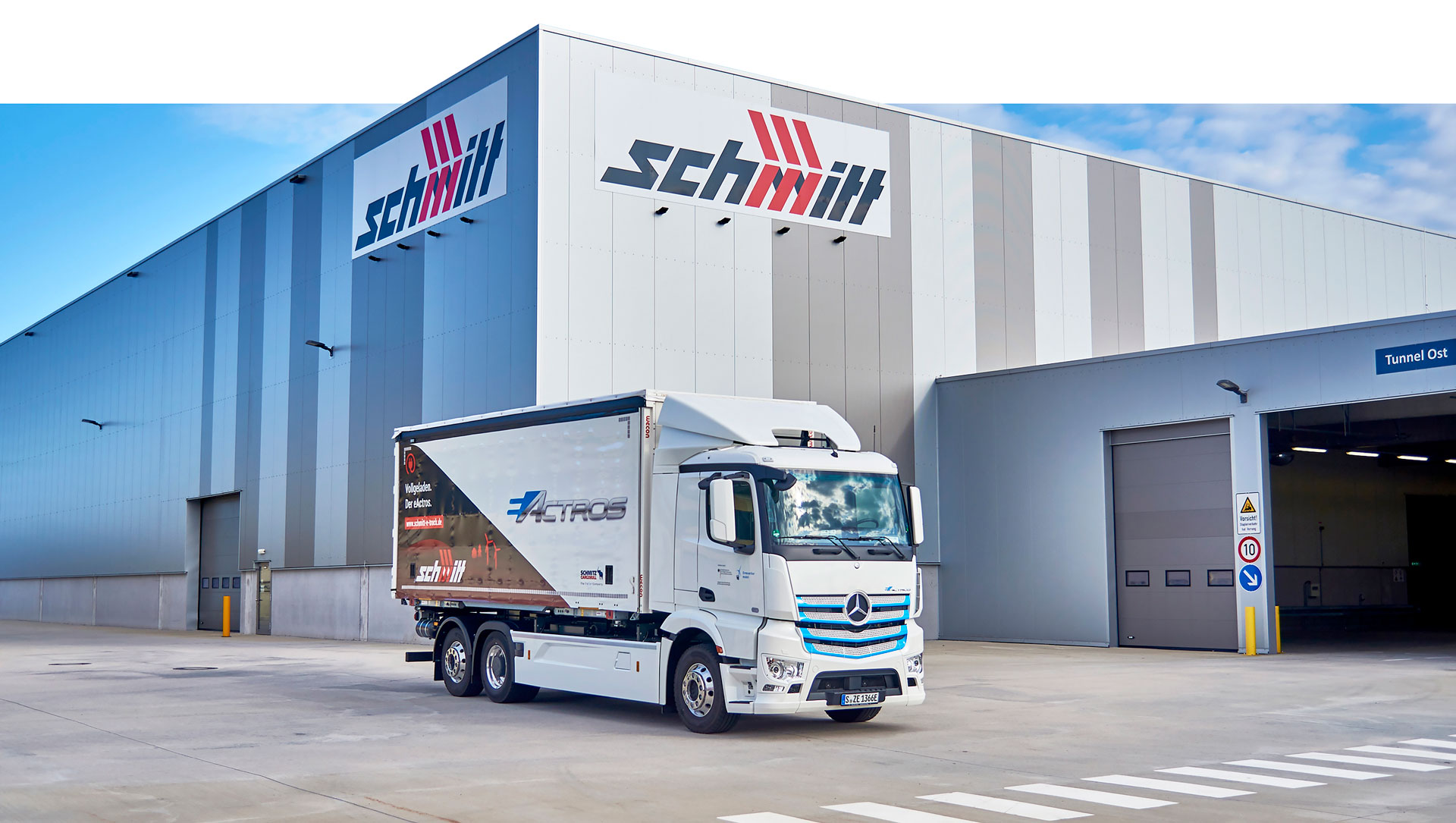
Conclusions for series production
The eActros continues to be driven and tested in customer use. ‘We’re seeing that it’s very robust, particularly in terms of the new electric components – there are hardly any problems. It’s practical and marks our entry into CO2-neutral haulage.’ According to Lazik, a huge traction unit with 40 tonnes of traction isn’t inconceivable, either: ‘We’re mainly focusing on heavy goods haulage, but we’re keeping all industries and uses in mind.’

